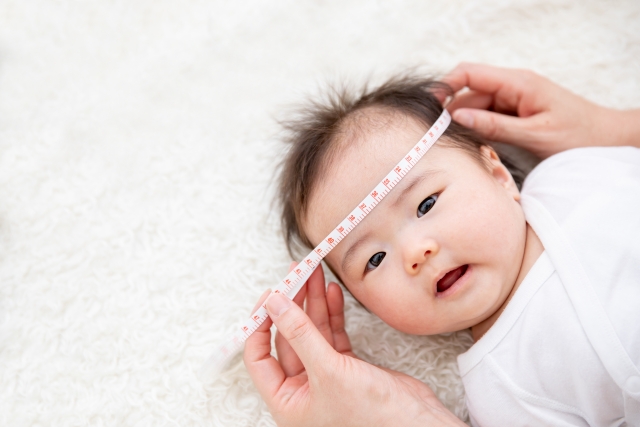Navigating pregnancy in a foreign country can be challenging, especially when you are unfamiliar with the healthcare system and administrative procedures. If you are living in Japan and have recently discovered that you are pregnant, it’s natural to have many questions. This guide is designed to help foreign women in Japan understand the essential steps to take during pregnancy, from obtaining your Boshi Techō (Mother and Child Health Handbook) to postnatal care and support services. We’ll cover key topics such as maternity healthcare, costs, and where to find the help you need.
We have also included conversations that are useful in various situations.We are using Ondoku-san for audio playback. Click the play button to listen to the audio.
- 0.1 1. Receiving the Mother and Child Health Handbook (Boshi Techō)
- 0.2 2. Finding an Obstetrician/Gynecologist (OB-GYN)
- 0.3 3. Prenatal Checkups: Frequency and What to Expect
- 0.4 4. Costs of Childbirth and National Health Insurance Coverage
- 0.5 5. Length of Hospital Stay After Delivery
- 0.6 6. Post-Delivery Life: Newborn Checkups and Support
- 0.7 7. Postpartum Consultation Services
- 1 Conclusion
1. Receiving the Mother and Child Health Handbook (Boshi Techō)

Once you confirm your pregnancy, one of the first steps in Japan is to visit your local ward office (kuyakusho) or city hall to register your pregnancy. After registering, you will receive the Boshi Techō, a vital document that tracks both the mother’s and baby’s health throughout pregnancy and early childhood. This handbook contains important information about prenatal checkups, vaccinations, and the baby’s growth, and is essential for receiving government services and subsidies.
Where to get it:
- Visit the maternity section of your local ward office with proof of pregnancy (usually a certificate from your doctor).
(妊娠したので)母子手帳をいただきたいです。
(Ninshin shitanode)Boshi Techo wo itadakitai desu)
(I’m pregnant, )I would like to receive a Mother and Child Health Handbook (Boshi Techō).
Language support:
- Some ward offices offer Boshi Techō in multiple languages, including English, Chinese, and Portuguese.
2. Finding an Obstetrician/Gynecologist (OB-GYN)
Finding a suitable obstetrician or gynecologist (referred to as sanfujinka in Japanese) is the next important step. You can choose between hospitals, maternity clinics, or private doctors based on your preferences. Some clinics specialize in maternity care and are highly recommended for personalized care, while larger hospitals may have advanced facilities for high-risk pregnancies.
How to search for a hospital or clinic:
- Ask for recommendations from friends or colleagues.
- Use online search platforms like Clinic Search or Japan Healthcare Info which list English-speaking doctors and hospitals.
- Your ward office may also provide a list of local maternity hospitals.
英語が通じる産婦人科を探しています。
(Eigo ga tsuujiru sanhujinka wo sagashite imasu)
I’m looking for an obstetrician who speaks English.
The number of obstetrics and gynecology clinics where women can give birth is decreasing due to the decline in birth rates. Therefore, once a pregnancy is confirmed, it is important to visit an obstetrics and gynecology clinic as soon as possible and inform them of your intention to give birth at that hospital.
3. Prenatal Checkups: Frequency and What to Expect
Prenatal checkups are essential for monitoring the health of both you and your baby throughout the pregnancy. In Japan, checkups are typically more frequent than in some other countries, especially as you approach the later stages of pregnancy.
Checkup schedule:
- Up to 23 weeks: Once a month
- 24 to 35 weeks: Twice a month
- From 36 weeks until delivery: Once a week
During these checkups, you can expect routine procedures such as blood pressure checks, urine tests, and ultrasounds to monitor the baby’s development.
Cost of checkups:
- Prenatal checkups are not fully covered by insurance, but the government provides vouchers that significantly reduce the cost. These vouchers are distributed when you receive your Boshi Techō.
4. Costs of Childbirth and National Health Insurance Coverage
Childbirth in Japan can be expensive, but there are financial supports in place to help reduce the burden, especially if you are enrolled in Japan’s National Health Insurance (NHI).
Average cost of childbirth:
- The cost of delivery in Japan varies depending on the hospital or clinic, but it usually ranges from ¥300,000 to ¥500,000 (around USD $2,700 to $4,500). This includes hospitalization for a standard vaginal delivery.
Insurance benefits:
- If you are covered by NHI, you are eligible for a lump-sum childbirth allowance (shussan ikuji ichijikin) of ¥420,000 (around USD $3,800) to help cover the costs. In most cases, this amount is paid directly to the hospital.
5. Length of Hospital Stay After Delivery
In Japan, postpartum hospital stays tend to be longer than in some other countries. For a vaginal delivery, the average stay is usually 4 to 5 days, while for a cesarean section, it can extend to 7 to 10 days. During this time, new mothers are given the opportunity to rest, recover, and receive guidance on baby care, including breastfeeding and bathing.
6. Post-Delivery Life: Newborn Checkups and Support

Once you leave the hospital, the care doesn’t stop. In Japan, regular checkups for newborns are scheduled to ensure their healthy growth and development.
Newborn checkup schedule:
- The first checkup is usually conducted a month after birth, followed by regular appointments as your baby grows. These checkups focus on physical development, feeding, and vaccination schedules.
Childcare support:
- Many local governments provide free or low-cost childcare support services, such as parenting classes and consultation sessions for new mothers. They may also offer home visits by public health nurses to check on the baby’s progress.
7. Postpartum Consultation Services
If you need further assistance after childbirth, Japan offers several support systems, including:
Consultation services:
- Your local ward office often has consultation desks where you can ask about various topics, from breastfeeding to postpartum depression.
- Some municipalities have kosodate kyōshitsu (child-rearing classes) and provide information on support groups for mothers.
Language support:
- If you are not fluent in Japanese, some local governments provide services in other languages or have interpreters available for important consultations.
Conclusion
Being pregnant in Japan can be an exciting but overwhelming experience, especially if you’re unfamiliar with the local systems. By understanding the steps involved—registering your pregnancy, finding the right doctor, and knowing what to expect with checkups and costs—you can feel more confident and prepared. Don’t hesitate to reach out to local resources, especially your ward office, where you can find support tailored to foreign residents.







